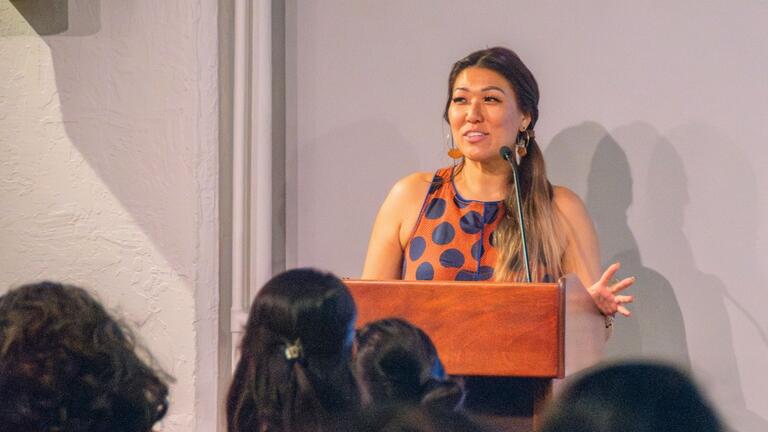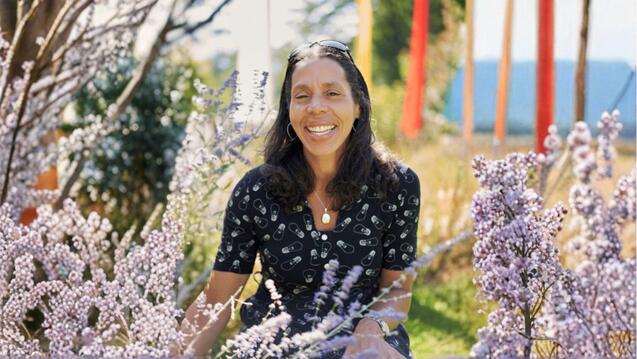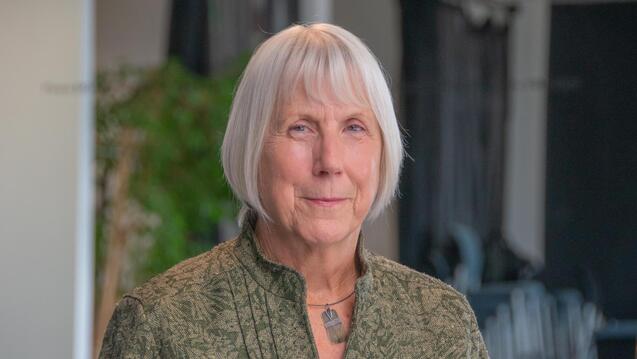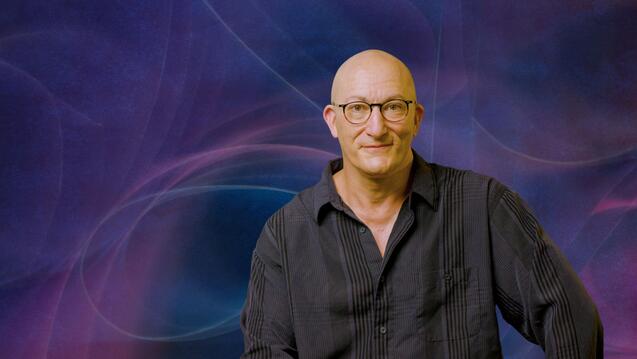Professor Jeanine Canty explores how the Transformative Studies Ph.D. prepares visionary changemakers to address humanity's disconnection from nature and each other.

Holding Space, Changing Systems: Kini Chang’s Work at CIIS
Inside CIIS’ bold approach to community mental health and healing-centered education.
Kini Chang, a clinician, educator, activist, worldwide speaker, and San Francisco native, brings a deep commitment to intergenerational healing, social justice, and community-based care to her work. She leads as program chair of the Master’s in Counseling Psychology, Community Mental Health (CMH) concentration at CIIS, a program designed for aspiring therapists who want to make a direct impact in underserved communities. Through a hybrid, weekend-based format and a curriculum rooted in trauma-informed and culturally-responsive care, students gain the tools to serve and advocate for those most affected by systemic inequities.
In this conversation, Kini shares her vision for accessible mental health care, the profound transformation she witnesses in her students, and what it truly means to belong.
What is the Community Mental Health program’s philosophy on mental health and the lens used to treat mental health issues?
When we think about community mental health, there are many different aspects. In the realm of psychotherapy, there are more traditional concepts in the way we think about therapy, such as 1-hour weekly sessions in a room with clients. However, we know that this structure and model does not work with every population, particularly those in the community who may be dealing with homelessness, co-occurring disorders, substance use and recovery, children in foster care, etc. There is a piece of "meeting clients where they're at" clinically, but at times also physically, mentally, and spiritually in their healing journey.
I have a colleague who runs a mobile mental health van. He is on the ground, in the community bringing accessibility to folks to receive drop-in therapy, right in the van. That's an example of really showing up for clients in response and consideration of their lives. Some of these client populations don't have cell phones or access to resources that you or I experience as everyday needs and wants. They might not even have a home or are really struggling from systemic oppression with trauma and the compounded aspects of trauma, maybe due to something like homelessness. And so, it’s about being able to meet the client where they're at out in the community. The systems involved are generally hospital systems or psychiatric inpatient systems. Being in the communities that are serving the clients in some of the most marginalized or underprivileged populations. You think about simple things like transportation; having a clinic around the corner from your block is going to be way easier to get to than having to go all the way downtown or having to go somewhere else and get on the bus and get there when they're just trying to survive.
Being able to bring mental health and have it be accessible to the communities is where community mental health lies. We're really talking about meeting the client where they're at, and that can be physically, emotionally, mentally, and bringing the clinical aspect and the work to their communities.
Who is the Community Mental Health program for?
The Community Mental Health program is for students who really see themselves as agents of change, probably deeply embedded, maybe already doing work in the community. So they may be case managers or residential counselors. Also, this program is for students who see themselves as activists who are really deeply embedded in social justice. I've worked in many programs, graduate programs as well as undergraduate programs. Our program is very unique in the way that it merges counseling psychology and integrates how to do that work in the community.
What kinds of transformations do you observe within your students over the course of the program?
I've had the opportunity to hear some of the stories from my students as well as some of the faculty, and even witness it in the short time that I've been here. One of the things I see a difference in is the student's confidence. You see the progression of their confidence. You see the progression of them. They almost always come in super excited and really passionate, but they don't always feel like there is direction. They may have a sense, “well, I kind of have an idea about what direction I'm going, but what is this really going to look like?” And you see them evolve in their confidence in being able to work with clients. You see their evolution in more deeply understanding the interconnectedness between systems and the individual and how oppression shows up with clients. You see things begin to click in real-time, and that's really exciting to see. And you also see them outside of the program. They themselves begin to grow. They are able to challenge some of the pieces that may be their own biases in a way that better equips them to be clinicians. So you really see a transformative process and you see it in real-time. Every semester there's a scaffolding of another layer of a deeper understanding.
What is the format of the program?
The Community Mental Health program is hybrid. We really thought about what the best way would be to deliver curriculum for folks working in the community, so we are a cohort weekend program. We have five cohort weekends (Saturday and Sunday) in the fall and spring semesters, and four cohort weekends in the summer. In between the cohort weekends, classes are asynchronous or online. Students are able to get an experience of being in the classroom in-person with their cohort and going through the program together, but then also have the asynchronous pieces that provide the opportunity for students to also tend to their everyday lives.
What is the Community Mental Health program designed to accomplish?
Our Community Mental Health students are going to be prepared to step out of graduate school deeply versed in the nuances of working in community mental health. They will be ready to make a difference right off the bat.
Why should potential students choose this program over programs at other schools?
The Community Mental Health program at CIIS is not just theoretically oriented. Our program is hands-on, nuts-and-bolts skill development where students learn applicable interventions. They will practice in a community mental health environment in their second year practicum in the program. These placements can include but are not limited to mental health clinics, nonprofits, government organizations, hospitals, and more. People heal relationally—so as one heals and interconnects, they heal as a collective. This lens is one of the most powerful aspects of being in Community Mental Health versus another program.
I think what else makes our program unique is the way that we think about the sociopolitical climate and how it affects trauma or how it affects the individual. What we do really well is interweave that into every single class. It's not just a class about multiculturalism, it's multiculturalism and understanding cultural humility and thinking about racialized trauma and thinking about oppression. Students walk out of it, being able to challenge systems, but from a clinical sense, they're not necessarily policy makers, they're not necessarily social workers, they're not those things, right? They're therapists, but their ability to be able to challenge the systems of oppression in clinical work is what makes us unique.
What tools do students gain from completing this program that they can use in their careers beyond CIIS?
Students are getting hands-on experience and applying theories and interventions in real-time with various populations and age ranges. So, it's a really great match in that way. Some of our students are offered jobs at their clinics before they're done with school. It's a really exciting thing to see, and it shows that the need is really out there. Something that we offer in our program to students is a deep understanding of systems and the way systems and oppression impact the individual. We can't treat or address the individual struggle, mental health issues, or a diagnosis without really looking at the way the system impacts them. We do a really good job connecting those two pieces so that we're able to view individuals holistically, in connection with their communities.
How does the Community Mental Health program reflect CIIS’ mission for integrative education?
The Community Mental Health program really fits into the holistic aspect of addressing the whole person, because we can't ignore that. The reality is, when we're treating a client in community mental health, we have to look at all aspects of who they are and how they are connected to the systems around them. So we ask questions like, what is their spiritual belief? What is their value? What do they come from? What is their story? How is it showing up in their body? How are they impacted interwoven into systems? A lot of our clients, if not all of our clients, suffer some level of trauma, whether it’s PTSD and it's chronic or mild, like “small t” trauma, and we have to look inward and see how it's showing up. They have a lot of psychosomatic symptoms, some of which manifest as physiological symptoms that they're being treated for.
There's statistics and information that shows direct correlations between folks in the community or folks that are dealing with community violence, community trauma, and obesity or heart disease, indigestion issues, autoimmune issues. And, of course, we address the physical and psychological impact as well. We may have them consider how the spiritual part of themselves resources or grounds them and what helps them stay connected to self and others. So, it's not possible to do treatment holistically without looking at all of those pieces.
What type of feedback do you often hear from students going through this program?
I had students share with me, actually just very recently, “thank you so much for bringing interventions, practices, and ways that we can approach not just our clients, but how we can take care of ourselves so that we can sustainably continue doing the work we love.” We get to continue. And I think community mental health is pretty emotionally grueling. You're in the trenches with your client and you might be going to court with them. If there's a domestic violence situation, you might be doing therapy on the street and they might be high. Think about the intensity of that work. So I really emphasize sustainability. I don't want them to graduate, end up burning out, and then leaving the program or leaving the field, because we need them so much. Something students have told me was, “thank you so much for helping me think about how to be sustainable and how to take care of myself while I'm taking care of clients.”
Can you share some words about your faculty? How do they work together as an ensemble in educating each student?
I love how diverse my faculty is. My faculty were here right before I came on, and they bring such unique expertise to the field and different areas in the field. What I love is that we are so different, but our differences are what makes it work. We find the thread of connection in the ways that we can work together. When I think about what works, you have a car, your car has different parts to it, and they need all those different parts, and they're not like one another, but in order for it to work, you have this thread of connection. I think in some ways, as chair, I hold that thread. I help weave and connect the expertise, the qualities that they bring, what they're passionate about, what matters to them, and then strengthen those pieces so that they can really do what they love. I love the diversity of my staff and what they bring in. And that's not just racial diversity. It's diversity in theoretical orientation, it's diversity in background, it's diversity in education, and yet they all do community mental health. And they're all natural leaders. So when we come together, we're kind of a powerhouse, and I'm very proud of that.
What is the most common career path graduates from the Community Mental Health program pursue after CIIS?
A lot of times those graduating from Community Mental Health may work in NGOs, nonprofits, government organizations, or behavioral health like San Francisco Behavioral Health Department or Public Health Department, or Alameda County Behavioral Health. They can also work in hospital settings. They can work in psychiatry or maybe smaller mental health clinics. They can work in jail systems if they choose to, or forensic systems. They can work in collaboration with employment programs and other on-the-ground programs, and also do some co-occurring work like substance abuse and recovery work with other multidisciplinary teams. And I think that's a key point. They're ready to work on a multidisciplinary team. A lot of these institutions that I talked about have many people, many moving parts. They're also ready to work in school systems, in school-based mental health. And you can already imagine in a hospital, in a school, in a government setting, in a jail system, there's many people with different philosophies. Graduates of the program can interweave into those systems and also work really well in navigating those systems. What they might end up doing is being a mental health clinician. Most of them actually start as therapists. So they're really integrating into the team as one of the therapists in these systems or in these environments.
What does community mean to you?
I find it important that students and individuals really understand the nuances of the meaning of community. If we take San Francisco or the Bay Area, every community is different, right? Every neighborhood has a different culture or what they bring to the table or the things that are unspoken, and we don't think about teaching that in school. But I think there's a lens, there's something about that that I implicitly, or maybe explicitly, communicate to students, “Learn the culture of the people” is something that I say to them, and sometimes I don't directly say that, but I encourage them to learn the culture of the neighborhoods. Learn the culture of the people, learn the norms that are within that community to more deeply understand how they're impacted. Because we're not experts. Our community and our clients are the experts of their lives. We're there to support them and guide them through that process, but ultimately, they've lived their whole life for these years so being able to listen to what that really is for them is important.
Community to me means a sense of belonging, connection. Some things that come to mind when I think of the word community are heart, intuition, container, and connection. This container and space that we are held in cultivates who we are. It is a space to show up exactly and authentically as we are. A place to really be able to be yourself and to know that there's acceptance in that. And that's I think why we have multiple forms of community. For me, it's the dance, art, and global cultural integration. In addition, it's being first generation Chinese American, born and raised here in San Francisco. In many ways, I live and breathe in this city. I have so much love for this place, watching it, and growing up here. Actually, there's only a few of us left. I really cherish that. It's in my blood. So that's a part of my life and part of my community. And in community, we can share our stories and be able to express what that means to us in a way that grows the sense of belonging.

Community Mental Health
Healing through social justice and structural change
Related News
Dr. Janis Phelps founded the world's first academically approved psychedelic therapy training program, preparing clinicians for a transforming field of mental health.
Explore CIIS’ groundbreaking Bachelor’s program and the bold vision behind its creation.



